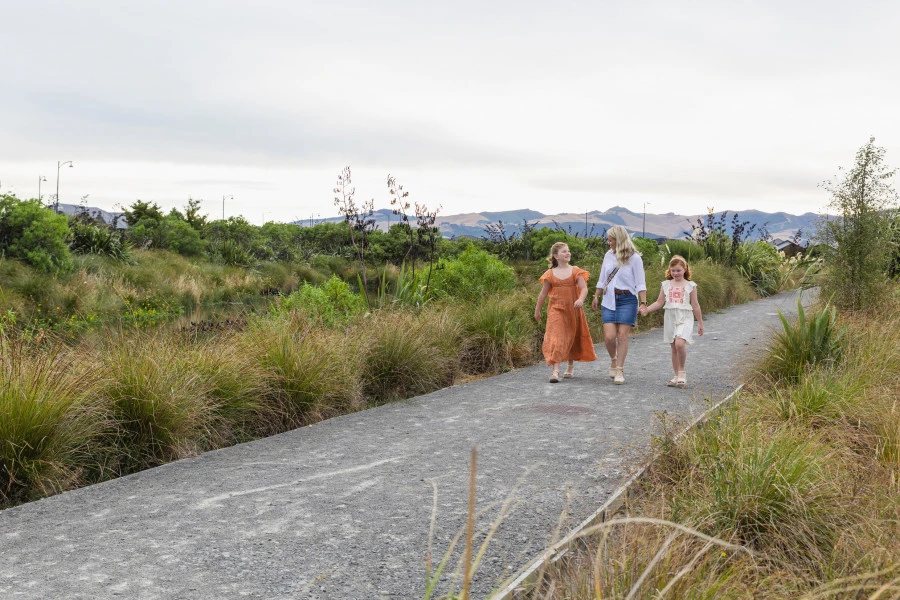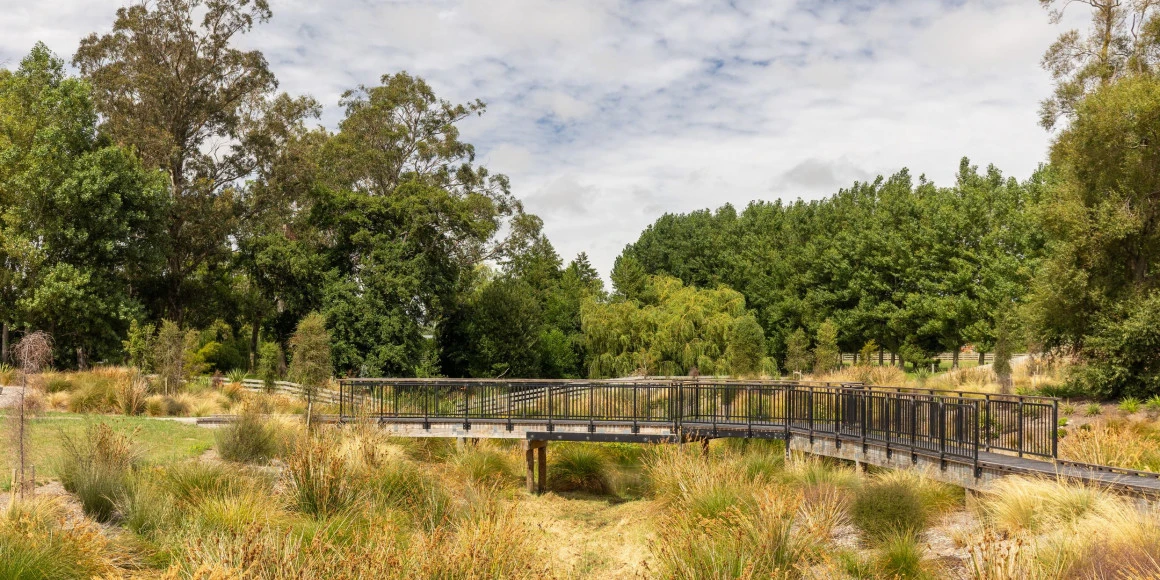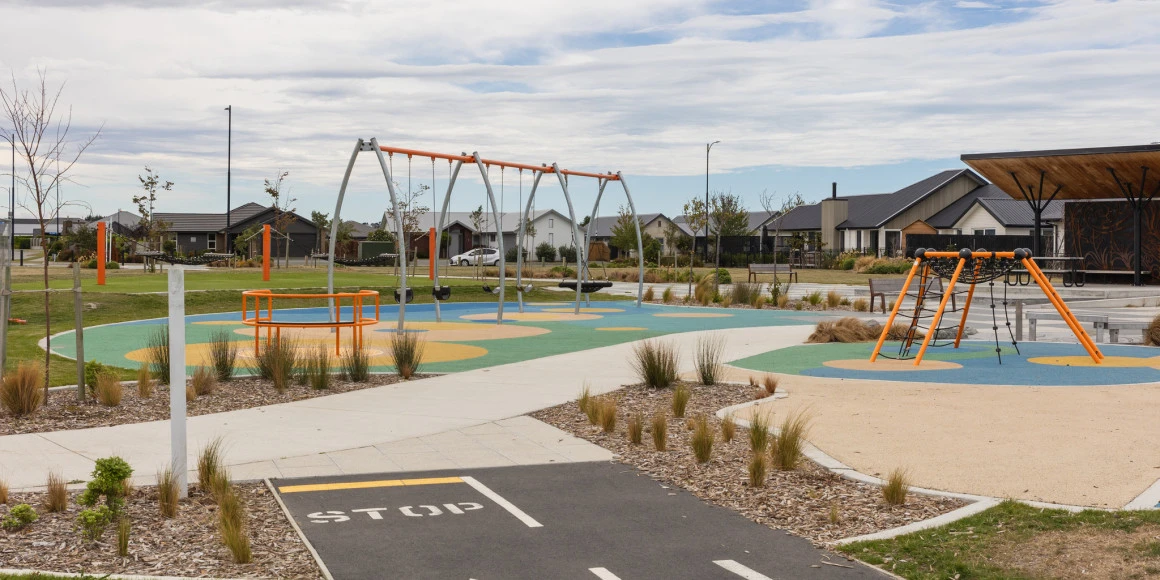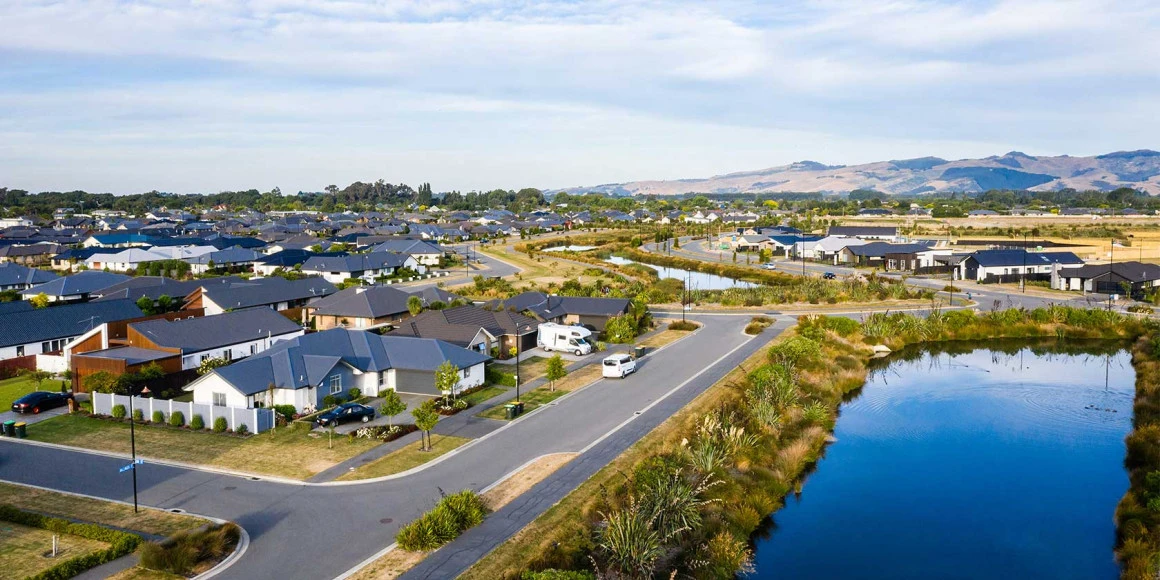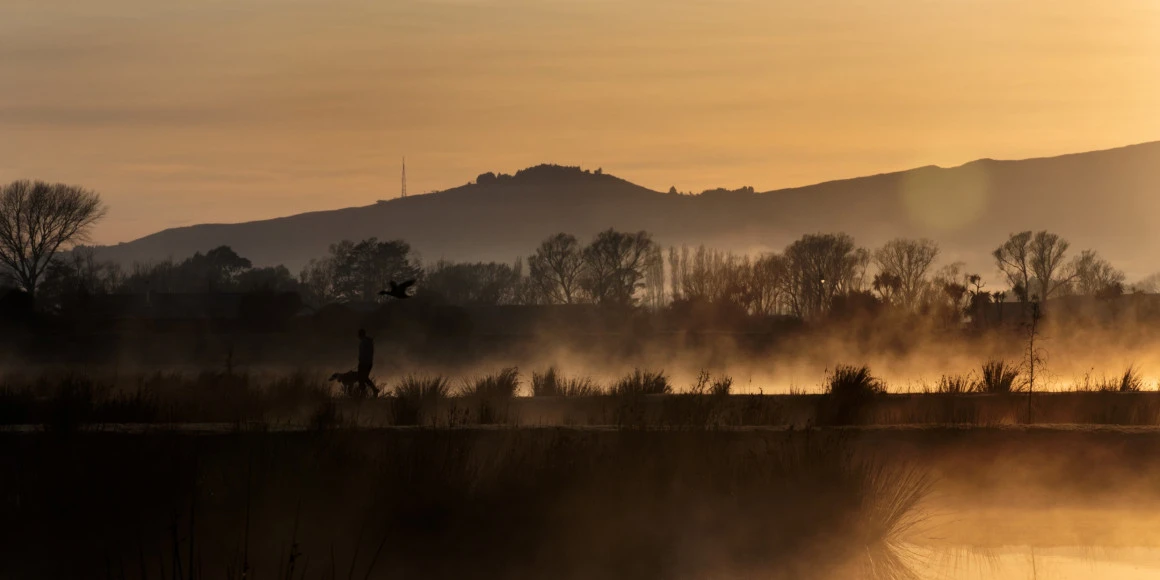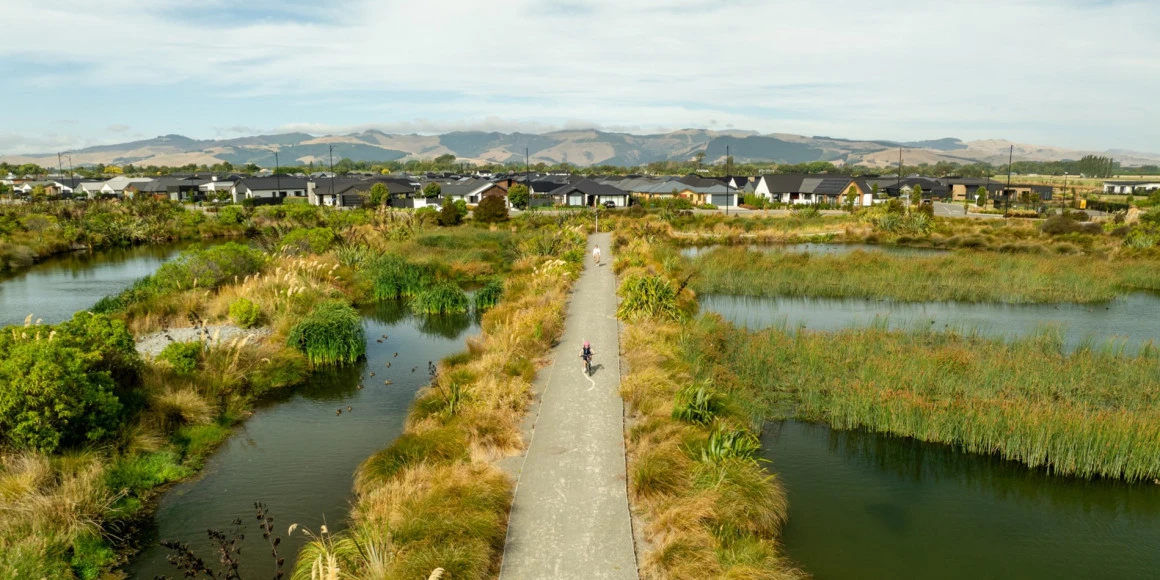Te Whāriki offers the perfect mix of lifestyle options, set against beautiful waterways and wetlands. There couldn’t be a nicer place to wake up. Sections within Te Whāriki are now SOLD OUT. If you missed out on a section but would still like to live within Te Whāriki there are a number of House & Land packages available within the development. You can find further information on these here: Te Whāriki House & Land Packages
Te Whāriki is nestled in the heart of Lincoln, in the Selwyn District. Close to shops, supermarkets, restaurants and cafes, it’s ideal for work and play. It’s just 20-minutes from the city centre or 30-minutes for a trip to the beach or hills. This central location makes day trips to Akaroa and Mt. Hutt a breeze, both reachable in under an hour and a half.
Nestled amongst walkways and cycle trails that weave through the beautiful wetland reserves and parks, Te Whāriki is the ideal location to take advantage of the Canterbury lifestyle and for your new home.
That’s why we call it Your Lifestyle Central.
